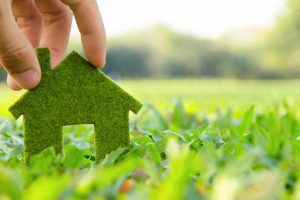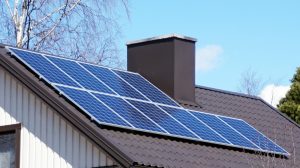- Floods are the most common natural disaster in the US, affecting approx. 20% of households annually.
- Floods can cause severe damage to homes, including property damage, mold, electrical issues, and health risks.
- Emotional distress due to losing property can also be a concern after a flood.
- To protect against floods, maintain your lawn, have an emergency plan, install flood barriers, and elevate utilities.
- Proper preparation is key to minimizing the damage and keeping your family safe during a flood.
Floods are one of the most common natural disasters in the United States, with millions of homeowners affected yearly. Floods can happen for various reasons, such as heavy rainfall, snowmelt, or storm surges, and can have devastating effects on homes and buildings.
Floods in the U.S.
Floods are the most common natural disaster that the United States experiences. More than 20 million Americans, representing approximately one in five U.S. households, live in areas prone to flooding. In 2017 alone, floods caused an estimated 17 billion dollars in damage. Here are some ways floods can affect homes in the U.S. and how to protect your home from them.
Damage to Property
One of the most significant ways that floods affect homes is by causing damage to the property. Floodwaters can cause immense destruction to your home’s foundation, walls, and floors. The water can seep into your home’s walls, weakening its structural integrity. The longer the floodwater stays inside your home, the more damage it can cause.
Mold and Mildew Growth
Floods can also cause mold and mildew growth, which can have many adverse health effects. Mold can grow quickly in wet areas, leading to health problems like respiratory issues and allergies. Mold can also damage your home’s structure and reduce its resale value.

Electrical Damage
Floods can cause significant damage to electrical systems in your home, putting you at risk of electrocution. Floodwaters can reach electrical outlets and wiring and cause shorts, leading to power outages and even fires.
Health Risks
Floods can also cause health risks, such as water-borne diseases, injuries, and infections. Floodwaters can contaminate your drinking water and food sources, leading to diseases like cholera, typhoid, and E.coli. Floods can also cause injuries like cuts, fractures, and bruises.
To minimize health risks, avoid contact with floodwater if possible, and disinfect your home after the flood. If you experience any injury or illness after a flood, seek medical help immediately.
Emotional Distress
In addition to physical damage, floods can also cause emotional distress. Losing a home or property can be a traumatic experience that can impact individuals and families. The loss of sentimental items or irreplaceable personal belongings can be devastating.
It’s essential to take care of your mental health after a flood. Reach out to support from friends, family, or mental health professionals. Focus on the positive aspects of the situation, such as being grateful for your safety and well-being.
Protecting Your Home Against Floods
Floods can be devastating, but there are steps you can take to protect your home and property from them. Here are some of those ways:

Maintain Your Lawn
Your lawn is the first defense against floods. Keep your lawn trimmed and ensure drainage systems are clear of debris and vegetation. If you don’t know how to do these things, hire a professional before a storm hits. An experienced lawn care service can make short work out of these tasks. They can also add certain features to your lawn, such as berms and retention ponds, which can help protect against floodwaters.
Emergency Procedures
Another step to protecting your home during floods is to have emergency procedures that you and your family can follow in case of a flood. Have a plan that outlines how you will evacuate the house, what you will do with your possessions, and what route you will take to get to higher ground. Have important documents in a waterproof container and take them with you when you evacuate the house. Plan to evacuate early to avoid being trapped in flood.
Install Flood Barriers
Flood barriers or sandbags can help prevent water from getting into your home. They are particularly useful in blocking floodwater from high-risk, low points such as basement doors and windows. Make sure you have enough sandbags and install them correctly. Don’t forget to seal vents and gaps in doors and windows with waterproof materials.
Elevate Utilities
Raise your electrical panel, heaters, and air conditioning units at least a foot off the ground to reduce the risk of short circuits during floods. Make sure that any permanently installed electrical units are above the flood level. You may need an experienced electrician to ensure everything is set up correctly.
Floods can happen at any time and cause significant damage to your home. But with the right preparation, you can minimize the damage and protect your home from floods. Keep these tips in mind when preparing for a flood, and ensure you have an emergency plan. With proper planning, you can help ensure the safety of yourself and your family during a flood.






